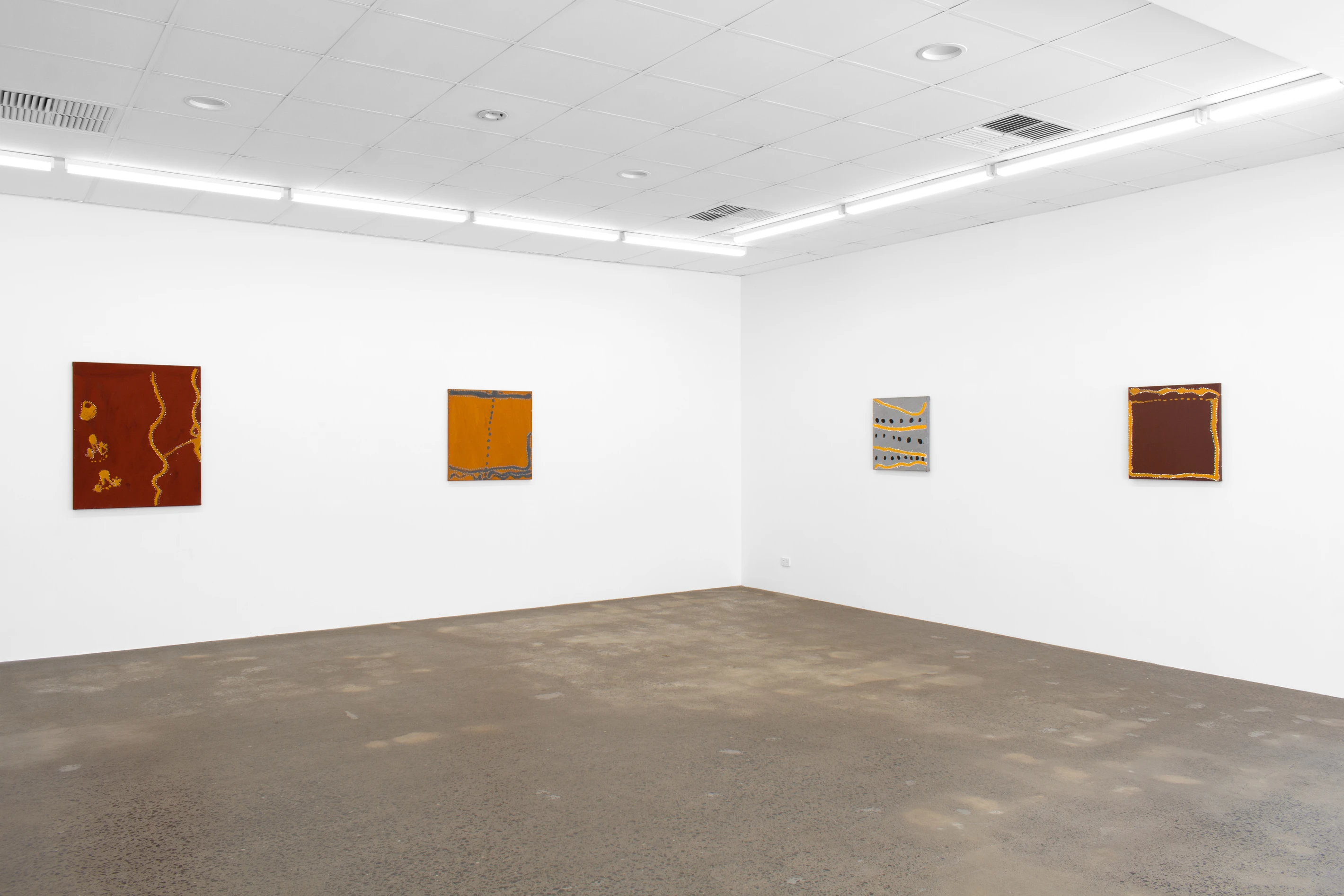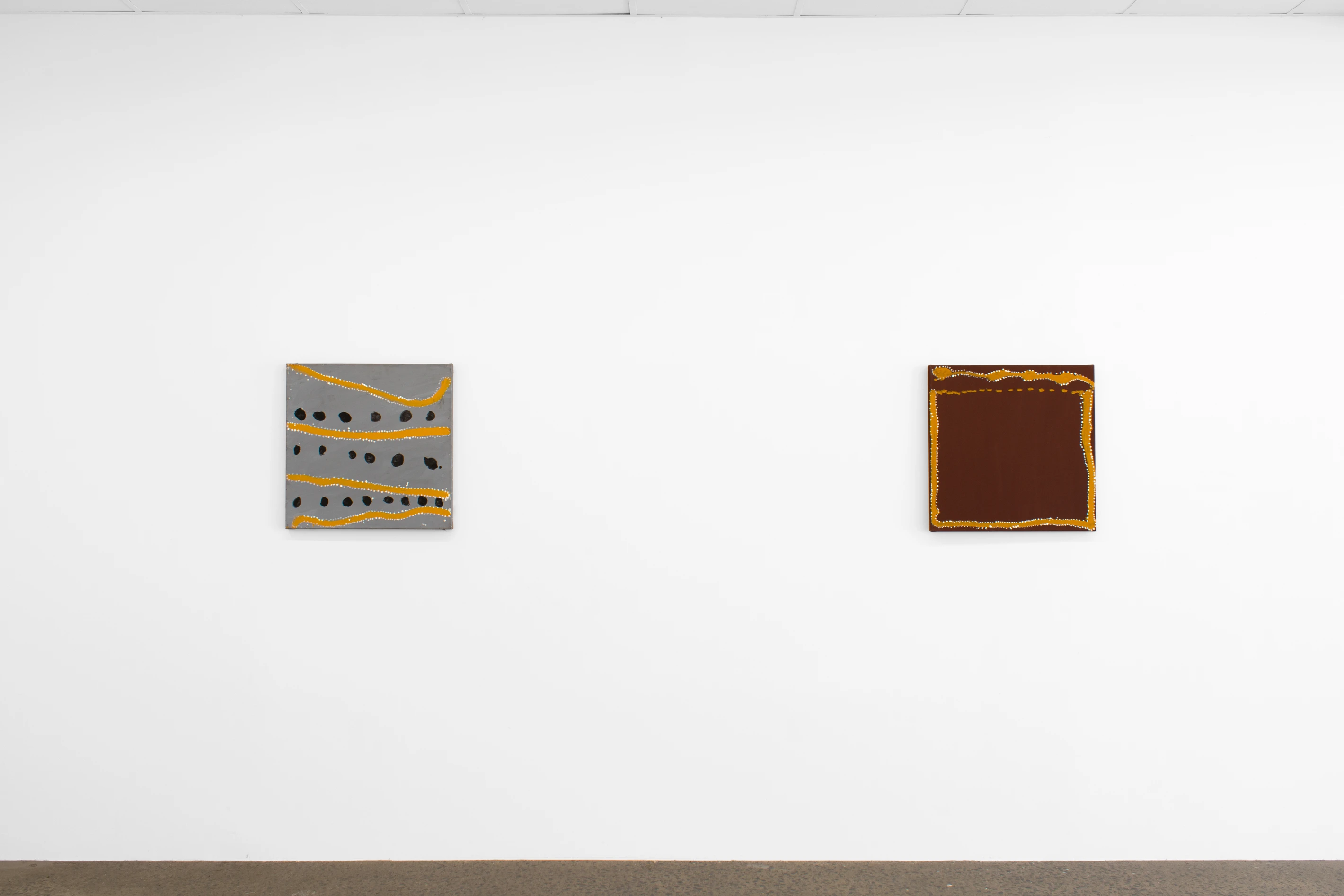20 October–24 November 2023







In the painting Goorladoorboo – Alligator Creek, a line of uneven dots traverses the centre of the canvas. These are the footsteps of Peter Newry’s grandfather as he walked alone away from the creek to the Keep River, the sole survivor of a mass poisoning. The presentation is sparse and unassuming, yet it compels the viewer to look deeper in an attempt to comprehend the gravity of meaning embedded within the painting's surface.
For those who have taken the time to appreciate the singular style of Peter Newry it is hard to believe that the late Miriwoong man is still relatively obscure in the world of contemporary Indigenous art. Though specialists in the field have compared Newry to artists Paddy Bedford and Rover Thomas, to this day Newry’s standing as one of the Kimberley greats has remained largely unobserved save a few astute collectors and curators. In collaboration with Waringarri Aboriginal Arts, NAP Contemporary is proud to present a suite of works painted by Newry in the latter of his career between 2008 and 2012 that exemplify why Newry is deserving of such acclaim.
Newry was born in 1939 at Newry Station where he lived most of his life before moving to Ivanhoe Station near Kununurra, and later to Jarnem near the Keep River National Park. During his lifetime he worked picking cotton and as a builder’s labourer and began painting as an elder at the late age of 63 for the purposes of recording for posterity what he referred to as the “histories” of his Miriwoong country. While his early works consisted of detailed encyclopaedic depictions of his country, by his later years Newry had refined the essence of visual storytelling to restrained representations that depicted only the most vital of details. Stripped down to the fundamentals, these understated pared back compositions are almost mysterious in their elusive suggestion of power held in check just below the surface. In his essay Peter Newry: The History Paintings, Henry F. Skerritt likens Newry’s deliberate meandering lines to the “worlds of meaning” embedded within Zen calligraphy, while the vast expanses or swathes of negative space that are confidently left untouched or painted boldly with a single earthy hue reveal the artists identity. This contrasts starkly with common Western artistic depictions of the desert as a fear inducing and devoid of self.
Through his simple lines, the form of the landscape is evoked in absence. Landmarks are not so much depicted, as alluded to; space is evoked along cragged ridges, whose jutting edges speak of a long life in the Kimberley.
Deeply connected to his practice at a spiritual level, despite the abstracted gestural nature of the brushstrokes and uneven vulnerability of his dotting, Newry’s compositions can never be mistaken for anything but intensely deliberate. This is the work of an artist who is convinced by his own style and representation of his "history" and one, who has, over the course of time, perfected the juxtaposition of flow and deliberation. Brushstrokes, empty spaces and mark making are considered and bold and at the same time imbued with a deep sensitivity. The complexity of Peter's work is the intriguing fusion of strength and vulnerability. His grand aerial perspectives retelling the "history" of his cultural knowledge are powerful compositions held in balance with a hint of frivolity introduced by way of the irregular application and placement of small white dots, lending each work an animated life and energy as it depicts the subliminal interchange between the seen and the unseen of country.





